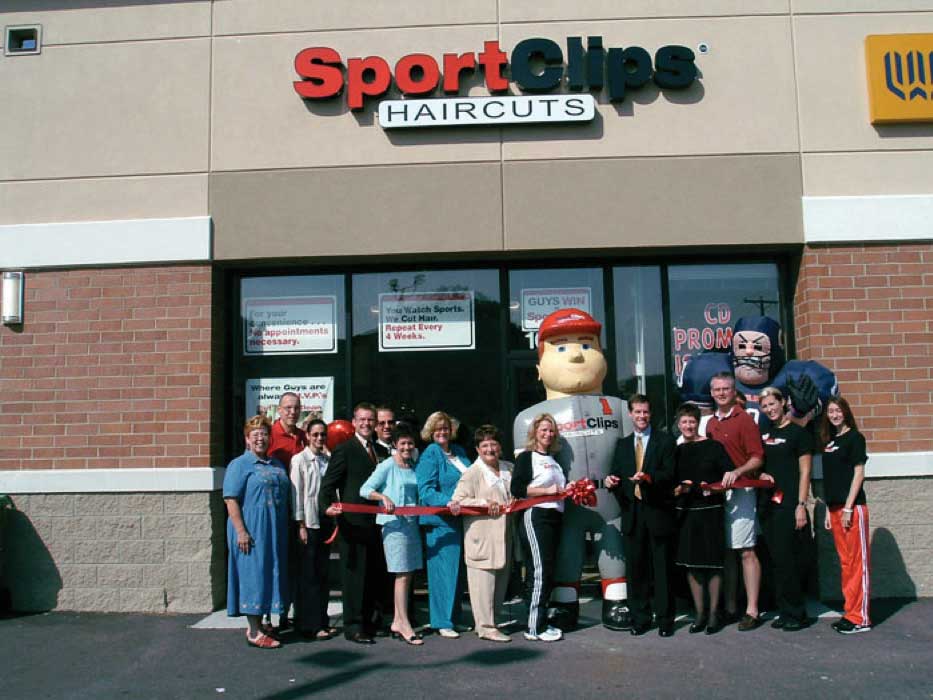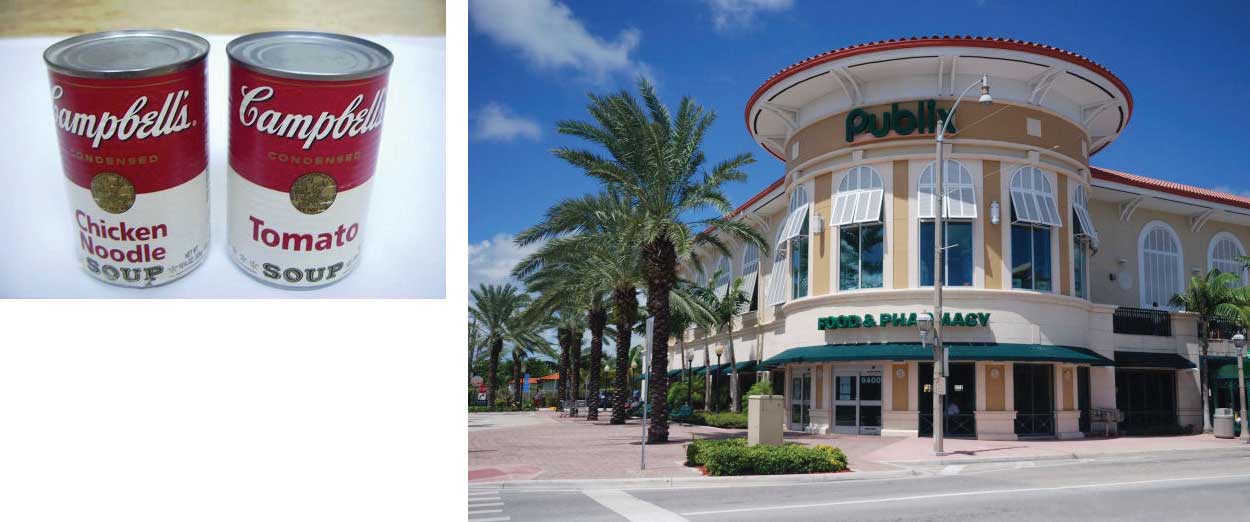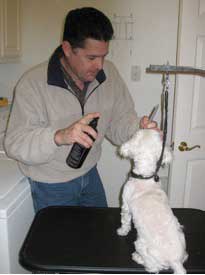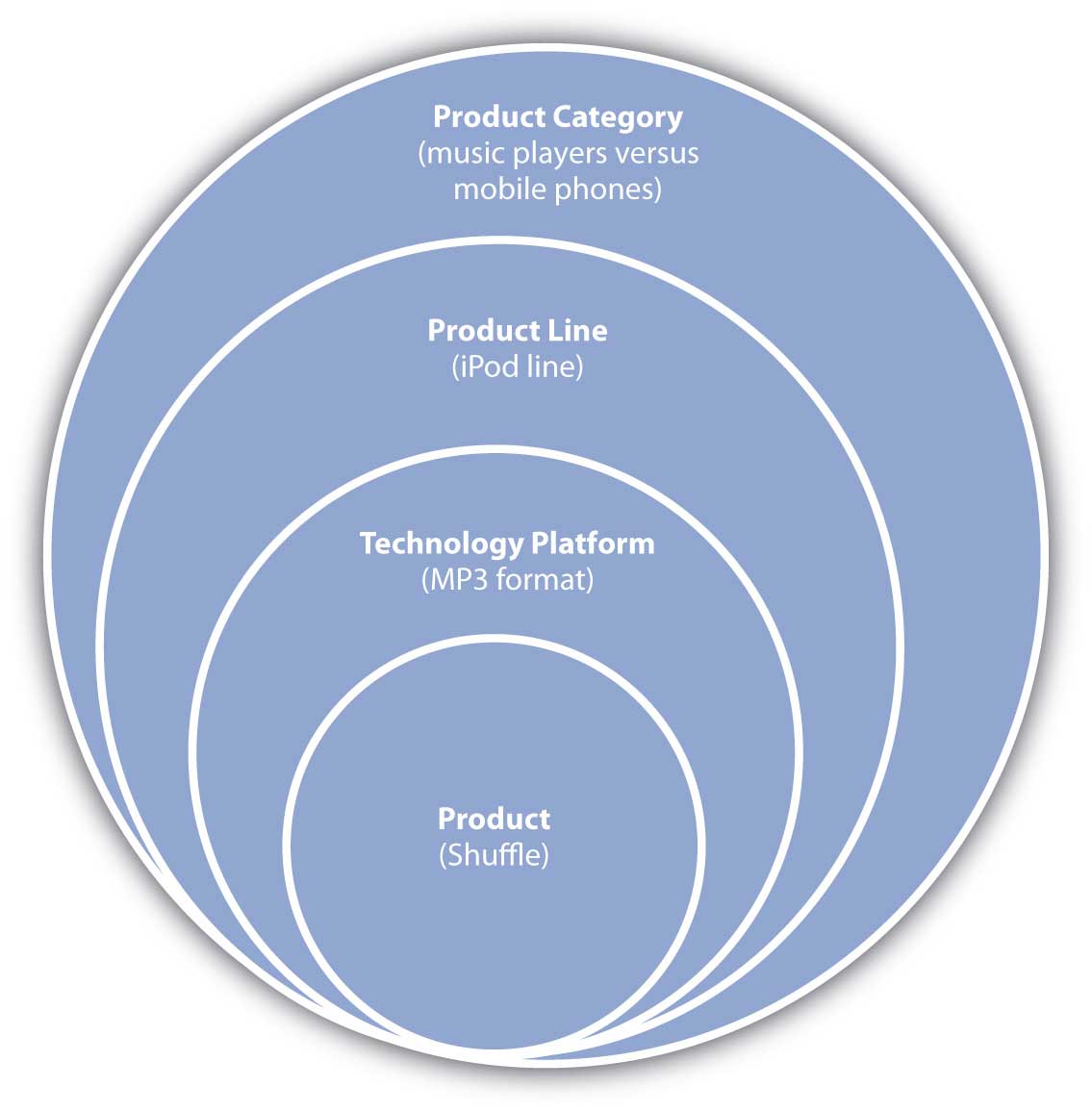This is “What Composes an Offering?”, section 6.1 from the book Marketing Principles (v. 1.0). For details on it (including licensing), click here.
For more information on the source of this book, or why it is available for free, please see the project's home page. You can browse or download additional books there. To download a .zip file containing this book to use offline, simply click here.
6.1 What Composes an Offering?
Learning Objectives
- Distinguish between the three major components of an offering—product, price, and service.
- Explain, from both a product-dominant and a service-dominant approach, the mix of components that compose different types of offerings.
- Distinguish between technology platforms and product lines.
People buy things to solve needs. In the case of the iPod, the need is to have better access to music, to look cool, or both. OfferingsThe entire bundle of a tangible good, intangible service, and price that composes what a company offers to customers. are products and services designed to deliver value to customers—either to fulfill their needs, satisfy their “wants,” or both. Recall that you learned about people’s needs in earlier chapters. In this chapter, we discuss how marketing fills those needs through the creation and delivery of offerings.
Product, Price, and Service
Most offerings consist of a productA tangible good that can be bought, sold, and owned., or a tangible good people can buy, sell, and own. Purchasing a classic iPod, for example, will allow you store up to forty thousand songs or two hundred hours of video. The amount of storage is an example of a featureA characteristic of an offering., or characteristic of the offering. If your playlist consists of twenty thousand songs, then this feature delivers a benefit to you—the benefit of plenty of storage. However, the feature will only benefit you up to a point. For example, you won’t be willing to pay more for the extra storage if you only need half that much. When a feature satisfies a need or want, then there is a benefitThe degree to which a feature satisfies a buyer’s need or desire.. Features, then, matter differently to different consumers based on each individual’s needs. Remember the value equation, which is different for every customer!
An offering also consists of a priceThe amount exchanged by the buyer to receive the value offered by the product or service., or the amount people pay to receive the offering’s benefits. The price paid can consist of a one-time payment, or it can consist of something more than that. Many consumers think of a product’s price as only the amount they paid; however, the true cost of owning an iPod, for example, is the cost of the device itself plus the cost of the music or videos downloaded onto it. The total cost of ownership (TCO)The total amount of time and money spent to acquire, use, and dispose of an offering., then, is the total amount someone pays to own, use, and eventually dispose of a product.
TCO is usually thought of as a concept businesses use to compare offerings. However, consumers also use the concept. For example, suppose you are comparing two sweaters, one that can be hand-washed and one that must be dry-cleaned. The hand-washable sweater will cost you less to own in dollars but may cost more to own in terms of your time and hassle. A smart consumer would take that into consideration. When we first introduced the personal value equation in Chapter 1 "What Is Marketing?", we discussed hassle as the time and effort spent making a purchase. A TCO approach, though, would also include the time and effort related to owning the product—in this case, the time and effort to hand wash the sweater.
Figure 6.1

Neiman-Marcus sells sweaters for over $1,000! But that’s just the purchase price. The total cost of ownership would also include the cost of having the sweater professionally cleaned or the value of the time and effort needed to hand wash it.
© 2010 Jupiterimages Corporation
A serviceAn intangible component of an offering. is an action that provides a buyer with an intangible benefit. A haircut is a service. When you purchase a haircut, it’s not something you can hold, give to another person, or resell. “Pure” services are offerings that don’t have any tangible characteristics associated with them. Skydiving is an example of a pure service. You are left with nothing after the jump but the memory of it (unless you buy a DVD of the event). Yes, a plane is required, and it is certainly tangible. But it isn’t the product—the jump is. At times people use the term “product” to mean an offering that’s either tangible or intangible. Banks, for example, often advertise specific types of loans, or financial “products,” they offer consumers. Yet truly these products are financial services. The term “product” is frequently used to describe an offering of either type.
Figure 6.2

Skydiving is an example of a pure service. You are left with nothing after the jump but the memory of it (unless you buy a DVD of the event).
© 2010 Jupiterimages Corporation
Many tangible products have an intangible service components attached to them, however. When Hewlett-Packard (HP) introduced its first piece of audio testing equipment, a key concern for buyers was the service HP could offer with it. Could a new company such as HP back up the product, should something go wrong with it? As you can probably tell, a service does not have to be consumed to be an important aspect of an offering. HP’s ability to provide good after-sales service in a timely fashion was an important selling characteristic of the audio oscillator, even if buyers never had to use the service.
Audio Clip
René Guess
http://app.wistia.com/embed/medias/248ebb3d65Listen to René Guess of Curves International describe her job. What does Curves International sell? What are the benefits that they provide? Do they provide a product or a service?
Figure 6.3

Sport Clips is a barbershop with a sports-bar atmosphere. The company’s slogan is “At Sport Clips, guys win.” So, although you may walk out of Sport Clips with the same haircut you could get from Pro Cuts, the experience you had getting it was very different, which adds value for some buyers.
Source: Sport Clips, used with permission.
What services do you get when you purchase a can of soup? You might think that a can of soup is as close to a “pure” product devoid of services that you can get. But think for a moment about your choices in terms of how to purchase the can of soup. You can buy it at a convenience store, a grocery store like Publix, or online. Your choice of how to get it is a function of the product’s intangible service benefits, such as the way you are able to shop for it.
Figure 6.4

Even what seems like a “pure” product like a can of soup can have an intangible service component associated with it, such as the way you are able to shop for it—say, at a convenience store, a grocery store like Publix, or perhaps online.
Source: Wikimedia Commons.
The Product-Dominant Approach to Marketing
From the traditional product-dominant perspective of business, marketers consider products, services, and prices as three separate and distinguishable characteristics. To some extent, they are. HP could, for example, add or strip out features from a piece of testing equipment and not change its service policies or the equipment’s price. The product-dominant marketing perspective has its roots in the Industrial Revolution. During this era, businesspeople focused on the development of products that could be mass produced cheaply. In other words, firms became product-orientedAn approach to business that centers on capturing business by focusing on creating and manufacturing better products at lower prices., meaning that they believed the best way to capture market share was to create and manufacture better products at lower prices. Marketing remained oriented that way until after World War II.
The Service-Dominant Approach to Marketing
Who determines which products are better? Customers do, of course. Thus, taking a product-oriented approach can result in marketing professionals focusing too much on the product itself and not enough on the customer or service-related factors that customers want. Most customers will compare tangible products and the prices charged for them in conjunction with the services that come with them. In other words, the complete offering is the basis of comparison. So, although a buyer will compare the price of product A to the price of product B, in the end, the prices are compared in conjunction with the other features and services of the products. The dominance of any one of these dimensions is a function of the buyer’s needs.
Figure 6.5

King Ranch Chicken is a casserole made with chicken, RO*TEL tomatoes, cream of mushroom soup, and cream of chicken soup. If you eat the casserole at your school’s cafeteria, you are consuming both a product and a service. Consequently, separating the product from the service is often an artificial exercise.
© 2010 Jupiterimages Corporation
The advantage of the service-dominant approach is that it integrates the product, price, and service dimensions of an offering. This helps marketers think more like their customers, which can help them add value to their firm’s products. In addition to the offering itself, marketers should consider what services it takes for the customer to acquire their offerings (e.g., the need to learn about the product from a sales clerk), to enjoy them, and to dispose of them (e.g., someone to move the product out of the house and haul it away), because each of these activities create costs for their customers—either monetary costs or time and hassle costs.
Customers are now becoming more involved in the creation of benefits. Let’s go back to that “pure” product, Campbell’s Cream of Chicken Soup. The consumer may prepare that can as a bowl of soup, but it could also be used as an ingredient in making King Ranch Chicken. As far as the consumer goes, no benefit is experienced until the soup is eaten; thus, the consumer played a part in the creation of the final “product” when the soup was an ingredient in the King Ranch Chicken. Or suppose your school’s cafeteria made King Ranch Chicken for you to consume; in that case you both ate a product and consumed a service.
Figure 6.6

Few consumers could have envisioned that a new type of adhesive would lead to the development of a product as successful as Post-it Notes.
© 2010 Jupiterimages Corporation
Some people argue that focusing too much on the customer can lead to too little product development or poor product development. These people believe that customers often have difficulty seeing how an innovative new technology can create benefits for them. Researchers and entrepreneurs frequently make many discoveries and then products are created as a result of those discoveries. 3M’s Post-it Notes are an example. The adhesive that made it possible for Post-it Notes to stick and restick was created by a 3M scientist who was actually in the process of trying to make something else. Post-it Notes came later.
Product Levels and Product Lines
A product’s technology platformThe core technology that is the basis for an offering or product. is the core technology on which it is built. Take for example, the iPod, which is based on MP3 technology. In many cases, the development of a new offering is to take a technology platform and rebundle its benefits in order to create a different version of an already-existing offering. For example, in addition to the iPod Classic, Apple offers the Shuffle and the Nano. Both are based on the same core technology.
In some instances, a new offering is based on a technology platform originally designed to solve different problems. For example, a number of products originally were designed to solve the problems facing NASA’s space-traveling astronauts. Later, that technology was used to develop new types of offerings. EQyss’s Micro Tek pet spray, which stops pets from scratching and biting themselves, is an example. The spray contains a trademarked formula developed by NASA to decontaminate astronauts after they return from space.
Figure 6.7

The formula in EQyss’s Micro Tek pet grooming spray was originally developed by NASA to decontaminate astronauts after they return from space.
Source: Photo by Amy Ray, used with permission.
A technology platform isn’t limited to tangible products. Knowledge can be a type of technology platform in a pure services environment. For example, the “bioesthetic” treatment model was developed to help people who suffer from TMJ, a jaw disorder that makes chewing painful. A dentist can be trained on the bioesthetic technology platform and then provide services based on it. There are, however, other ways to treat TMJ that involve other platforms, or bases of knowledge and procedures, such as surgery.
Few firms survive by selling only one product. Most firms sell several offerings designed to work together to satisfy a broad range of customers’ needs and desires. A product lineA group of offerings that serve similar needs and are sold under the same name. is group of related offerings. Product lines are created to make marketing strategies more efficient. Campbell’s condensed soups, for example, are basic soups sold in cans with red labels. But Campbell’s Chunky is a ready-to-eat soup sold in cans that are labeled differently. Most consumers expect there to be differences between Campbell’s red-label chicken soup and Chunky chicken soup, even though they are both made by the same company.
A product line can be broad, as in the case of Campbell’s condensed soup line, which consists of several dozen different flavors. Or, a product line can be narrow, as in the case of Apple’s iPod line, which consists of only a few different MP3 devices. How many offerings there are in a single product line—that is, whether the product line is broad or narrow—is called line depthThe number of variations in a single product line.. When new but similar products are added to the product line, it is called a line extensionA new idea or offering that occurs when a company comes out with another model (related product or service) based on the same platform and brand as one of its other products.. If Apple introduces a new MP3 player to the iPod family, that would be a line extension. Companies can also offer many different product lines. Line breadthThe number of different, or distinct, product lines offered by a company. (or width) is a function of how many different, or distinct, product lines a company has. For example, Campbell’s has a Chunky soup line, condensed soup line, Kids’ soup line, Lower Sodium soup line, and a number of nonsoup lines like Pace Picante sauces, Prego Italian sauces, and crackers. The entire assortment of products that a firm offers is called the product mixThe entire assortment of products that a firm offers..
As Figure 6.8 "Product Levels" shows, there are four offering levels. Consider the iPod Shuffle. There is (1) the basic offering (the device itself), (2) the offering’s technology platform (the MP3 format or storage system used by the Shuffle), (3) the product line to which the Shuffle belongs (Apple’s iPod line of MP3 music players), and (4) the product category to which the offering belongs (MP3 players as opposed to iPhones, for example).
Figure 6.8 Product Levels

So how does a technology platform become a new product or service or line of new products and services? In Chapter 7 "Developing and Managing Offerings", we will take a closer look at how companies design and develop new offerings.
Key Takeaway
Companies market offerings composed of a combination of tangible and intangible characteristics for certain prices. During the Industrial Revolution, firms focused primarily on products and not so much on customers. The service-dominant perspective to marketing integrates three different dimensions of an offering—not only the product but also its price and the services associated with it. This perspective helps marketers think more like their customers, which helps firms add value to their offerings. An offering is based on a technology platform, which can be used to create a product line. A product line is a group of similar offerings. A product line can be deep (many offerings of a similar type) and/or broad (offerings that are very different from one another and cover a wide range of customers’ needs). The entire assortment of products that a company offers is called the product mix.
Review Questions
- How do the product-dominant and service-dominant approaches to marketing differ?
- Do “product-dominant” and “product-oriented” mean the same thing?
- What is the difference between a technology platform and a product line?
- Does a product line have to be built on one technology platform?
- What is the difference between product depth and product breadth?




